10 Best AI Tools for Data Analysis [2025]


Ten years ago—data analysis was like painstakingly piecing together a puzzle with a limited toolkit, often relying on manual manipulation and static dashboards.
Fast forward to today, with the AI revolution, it's like having a super-smart assistant that not only helps you find the missing pieces—but also reveals hidden patterns and predicts the future picture in split seconds.
Now, AI is like our superpower—it is helping us find answers faster and see things we never even knew to look for, even from a large pool of data.
But you know how the market reacts—now, we have many AI tools for data analysis. And I'm sure you're overwhelmed by the sheer number of options. You're not alone.
That's where this guide comes in. We've compiled 10 of the best data analysis tools on the market based on some relevant evaluations and experience in the data analysis industry.
What should you look for in an AI tool for Data Analysis?
With AI stepping into the data analysis arena, everyone is eager to leverage its power while approaching it with a critical eye.
Here are some things I'll consider before buying any generative AI tool for data analysis:
Integration with Existing Data
A shiny new tool is useless if it doesn’t connect with your existing data stack. Choose a tool that seamlessly integrates with your data sources, databases, and visualization tools.
Customization and Control
Every data analysis task is unique. You need a tool for customization and control over the analysis process. Can you fine-tune the model parameters? Can you adjust the level of automation and intervention? Can your tailor the output to specific needs and audiences?
Scalability and Performance
If you deal with large and complex dataset, then go for a tool that can handle the volume and complexity of your data without compromising performance. Can it scale with you growing needs? How fast can it process and analyze data? Is it optimized for different types of analysis (e.g., predictive modeling, forecasting)?
Data Security and Privacy
Data security is paramount, especially when handling sensitive data information. Where will the data bestored and processed? Does the tool comply with relevant data privacy regulations (like GDPR)? What security measures are in place to protect your data from unauthorized access and breaches?
Review of 10 Best AI Tools for Data Analysis
Generative AI holds immense potential for data analysis, but choosing the right tool requires careful consideration. Here's a review of the 10 best AI Data analytics tools.
1. Rows

Rows is the AI Analytics Workspace for modern teams and decision makers. Instead of relying on BI dashboards, SQL queries, or stitched-together spreadsheets, Rows gives you autonomy with your data by letting you connect your tools and analyze everything in one place, all with natural language.
It features a modern copilot that helps you fetch, conversate and surface insights about any data: from your databases, analytics tools, ads platform, PDF or image or spreadsheet files.
Rows' AI Analyst
Our AI analyst is a powerhouse. With Rows’ AI Analyst, you can use natural language to ask AI data-related questions. The tool will do all your calculations, like descriptive statistics, data summarization, transformation, and pivoting, plus regular spreadsheet commands, like charts, formatting and more to come.
It works in two major angles:
Independent operations: Create multiple unrelated outputs in a single prompt—like adding several columns or generating a series of charts.
Sequential operations: Build workflows where steps depend on each other—like adding a column and creating a chart based on that column.
And guess what? You don't need complex formulas, scripts and calculations to:
Get answers to your business SEO questions (Example: how do clicks correlate with position?) Instead of writing complex queries, you can simply ask questions in plain English, and Polymer's AI will understand and provide the answers you need. It's like having an AI analyst that can translate your questions into data insights.
Add calculated columns to tables to unlock deeper insights ( e.g. 'add a column that classify keyword position in brackets: [1-3], [4=10] [10+]")
Perform what-if analyses (e.g. How does my revenue change if my margin increases by 5%?)
Run Goal seek (e.g. How many orders do I need to hit $100k, $500k and $1M in revenue?)
Add tables to extract trends, generate pivots, and slice the data (i.e. add a table with average CTR per page category)
Add charts to turn numbers into visual stories (e.g. add a combo of impressions and clicks over time)
Enrich a dataset with relevant complementary info (e.g. add a column with the State based on the address)
The AI Analyst scans your dataset, understands the key variables, and provides you with summarization, transformations, and enrichments.
Click on the "AI Analyst“ ✨ icon, at the top right corner of any table.
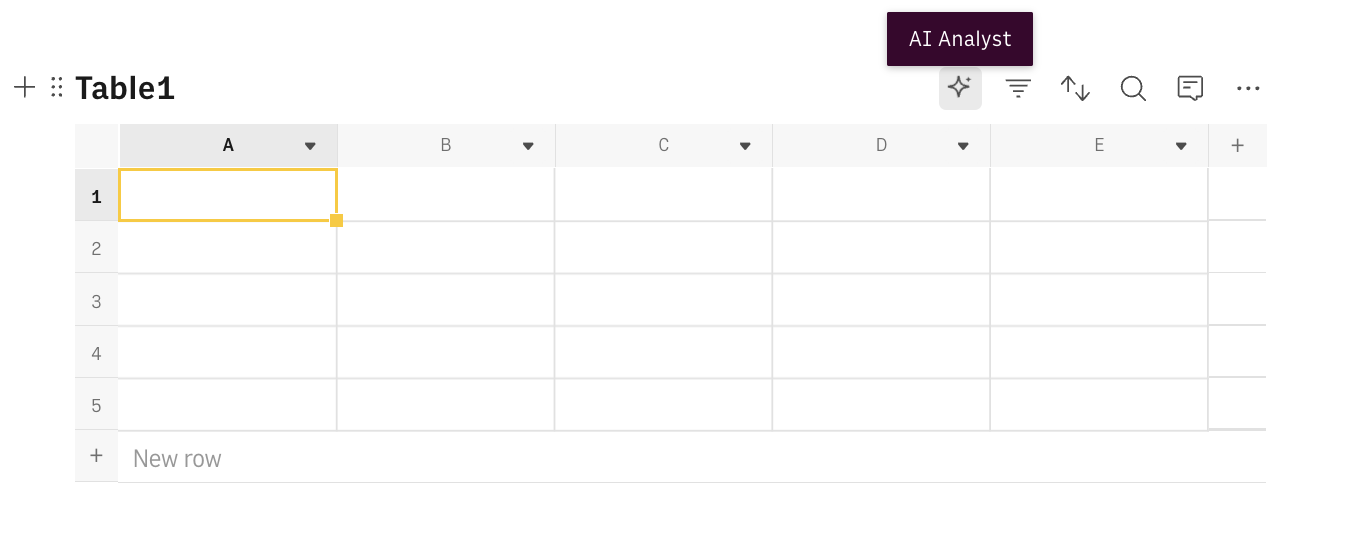
A chat interface will open on the right: you can ask a broad range of questions, from basic spreadsheet commands - plotting a chart or adding or formatting columns - to more complex tasks, such as slicing, pivoting, or computing metrics about your data.
For example, given a dataset with daily revenue and costs of various marketing campaigns, you can ask the Analyst to add a column with the profit margin. Watch the video below:
Rows' Native OpenAI integration
Rows integrates with Open AI for proprietary functions that automate prompts and address specific types of tasks. Below are a few of these function that are very important for marketing use cases:
Clean Up Data: Capitalize text, remove whitespaces and unnecessary text, parse email domains, and more.
Text Classification: Tag emails, classify support tickets or product feedback.
Sentiment Analysis: This technique determines the overall sentiment of a piece of text and identifies specific opinions and emotions within the text. It is useful for product reviews, feedback, or social media comments.
Extraction: Extract concepts or portions from a text.
Summarization: Condense news articles, messages, legal documents, research papers, and more according to a specific style.
Content generation: Generate content for advertising purposes, such as keywords, headlines, sub-headlines, or body copies.
Find and Enrich data: Generate dummy data or public data points for things you already have on your spreadsheet, like countries and companies.
Try them out in our OPENAI automation template.
What's more? 50+ data integrations
Rows has 50+ built-in data sources integrations in various domains. With Rows, you can gather data from various sources in your system. This allows for more detailed analyses and helps your team uncover insights they might miss.
Here's a division of the built-in integrations in Rows:
Marketing: GA4, GSC, Facebook, Instagram, Tiktok
Productivity software: OpenAI, Notion, Slack, Email, Translate
Data warehouse: MySQL, BigQuery, PostgreSQL, Snowflake, Amazon Redshift
Discover the full catalog here.
You also have the possibility of creating custom connections via our HTTP functions.
💡 Pro tip: When the tool you’re working with isn’t listed in our catalog, HTTP functions allow you to connect to any RESTful API, GraphQL endpoint, or other HTTP-based data sources, regardless of their structure or authentication methods. On Rows, GET, POST, PUT, and PATCH make the catalog of integrable tools virtually infinite. Try them our in our HTTP tester.
Read more: 10 Best Data aggregation tools in 2025.
2. Alteryx
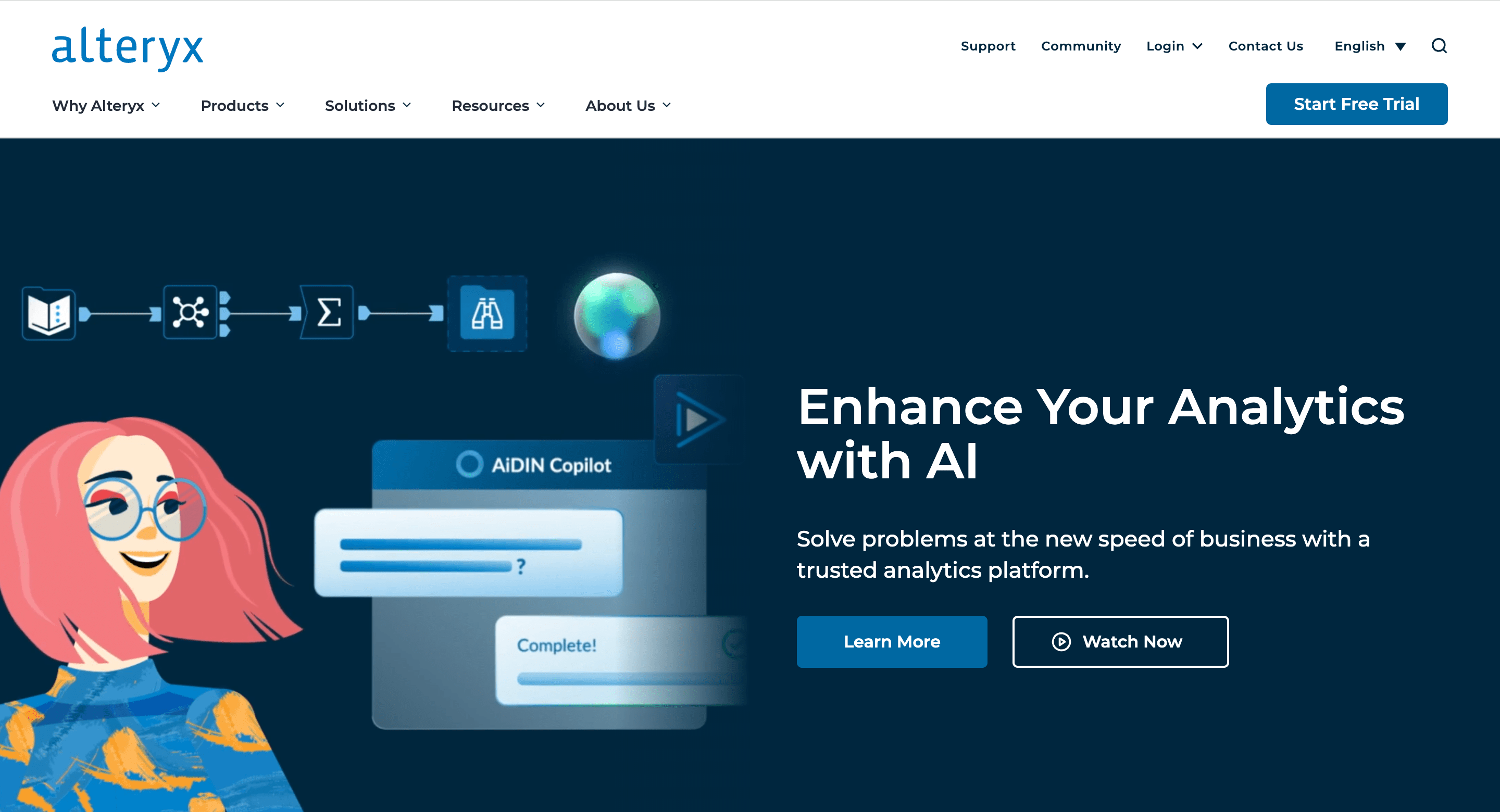
Alteryx is a data analytics and visualization platform that offers a wide range of tools to help businesses analyze data.
Alteryx offers Auto Insights, a feature powered by its AiDIN AI engine, to provide automated insights from data and uncover patterns and relationships you might otherwise miss.
In addition, it provides tools for analyzing location-based data, enabling users to gain insights from spatial patterns and relationships. This feature is particularly useful for businesses with geographically dispersed operations or those dealing with location-specific data.
Top features:
AiDIN Copilot
Automated machine learning
Predictive modeling tools
Feature engineering
Pros and cons
✅ Intuitive user interface
✅ Workflow automation
❌ Pricing opacity
❌ Dependency on open source
Pricing: Pricing details are not available on their website.
3. Microsoft BI
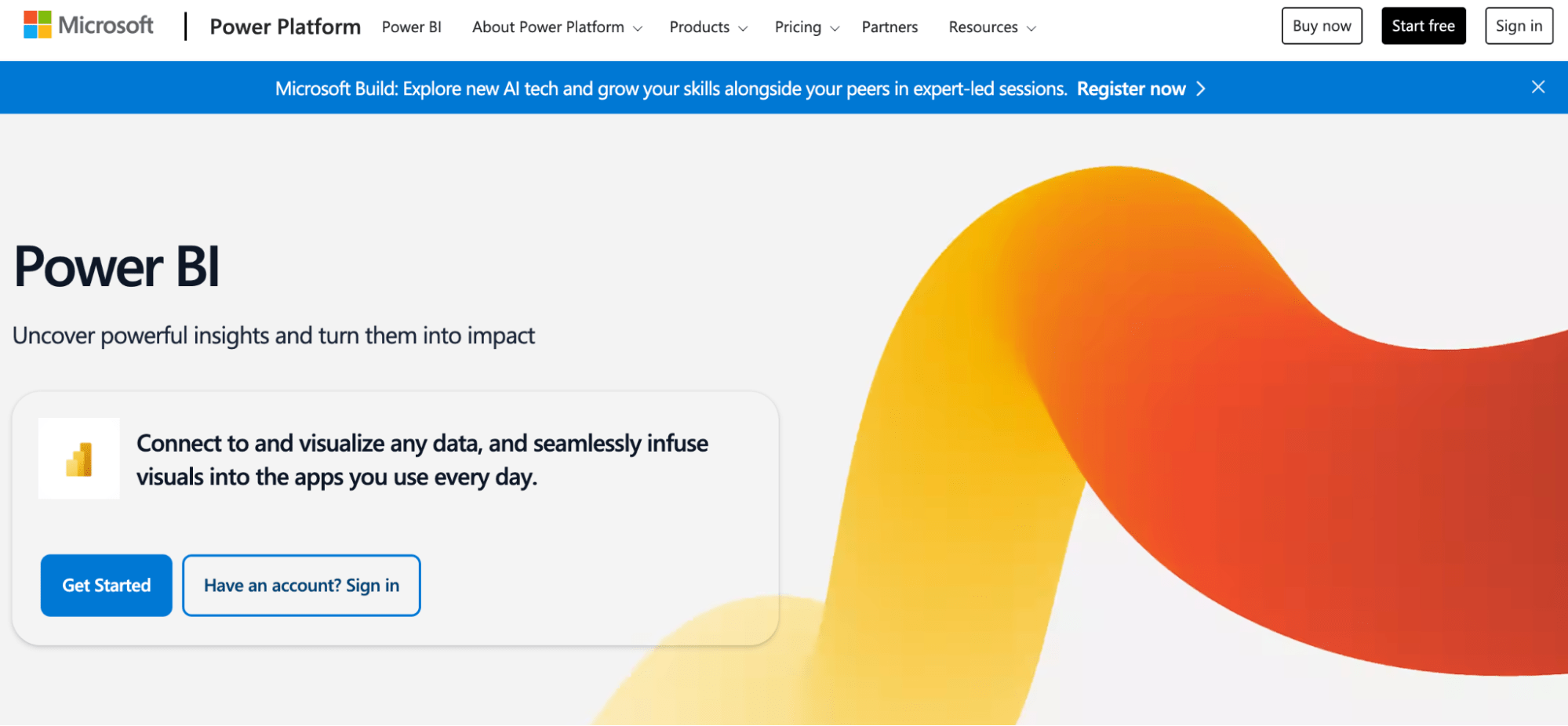
Microsoft Power BI is a business intelligence platform that provides tools for aggregating, analyzing, visualizing, and sharing data.
Microsoft Power BI uses AI to simplify data analysis, providing features like automated insights, key influencer analysis, and anomaly detection. This helps users quickly identify trends, patterns, and outliers in their data without needing deep technical expertise.
For example, if a user imports a dataset with sales data, Smart Data Discovery can automatically generate charts and graphs showing sales trends over time.
Key features:
AI insights
Q/A with natural language
Automatic anomaly detection
Azure cognitive services integration
Pros and cons:
✅ Excel integration
✅ Regular updates
❌ Steep learning curve
❌ DAX function complexity
Pricing: Price starts at $10 per month.
4. Tableau
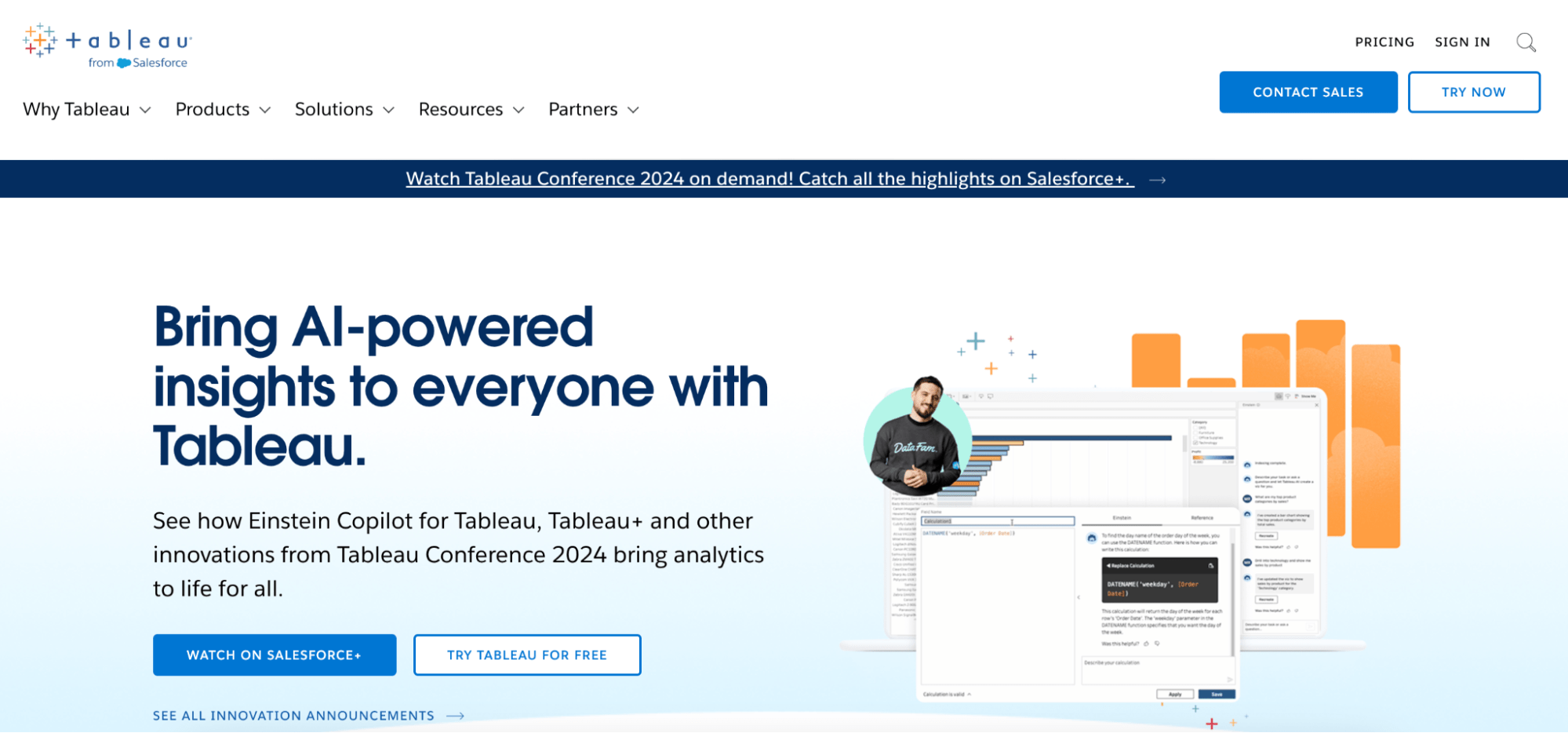
Tableau is a popular data visualization tool that's become a staple for data analysts, scientists, and business users alike. It's known for its drag-and-drop interface that makes it easy to connect to various data sources, create interactive dashboards, and explore data visually to uncover insights.
One of the key components of Tableau AI is Tableau Pulse, which utilizes AI to offer personalized and automated experiences tailored to each user's key performance indicators (KPIs).
Key features:
Einstein discovery
Predictive forecasting
Automated insights
Data prep suggestions
Pros and cons
✅ Data visualization
✅ Broad data source connectivity
❌ Security limitations
Pricing: Starter plan at $15 per month.
5. Sisense AI
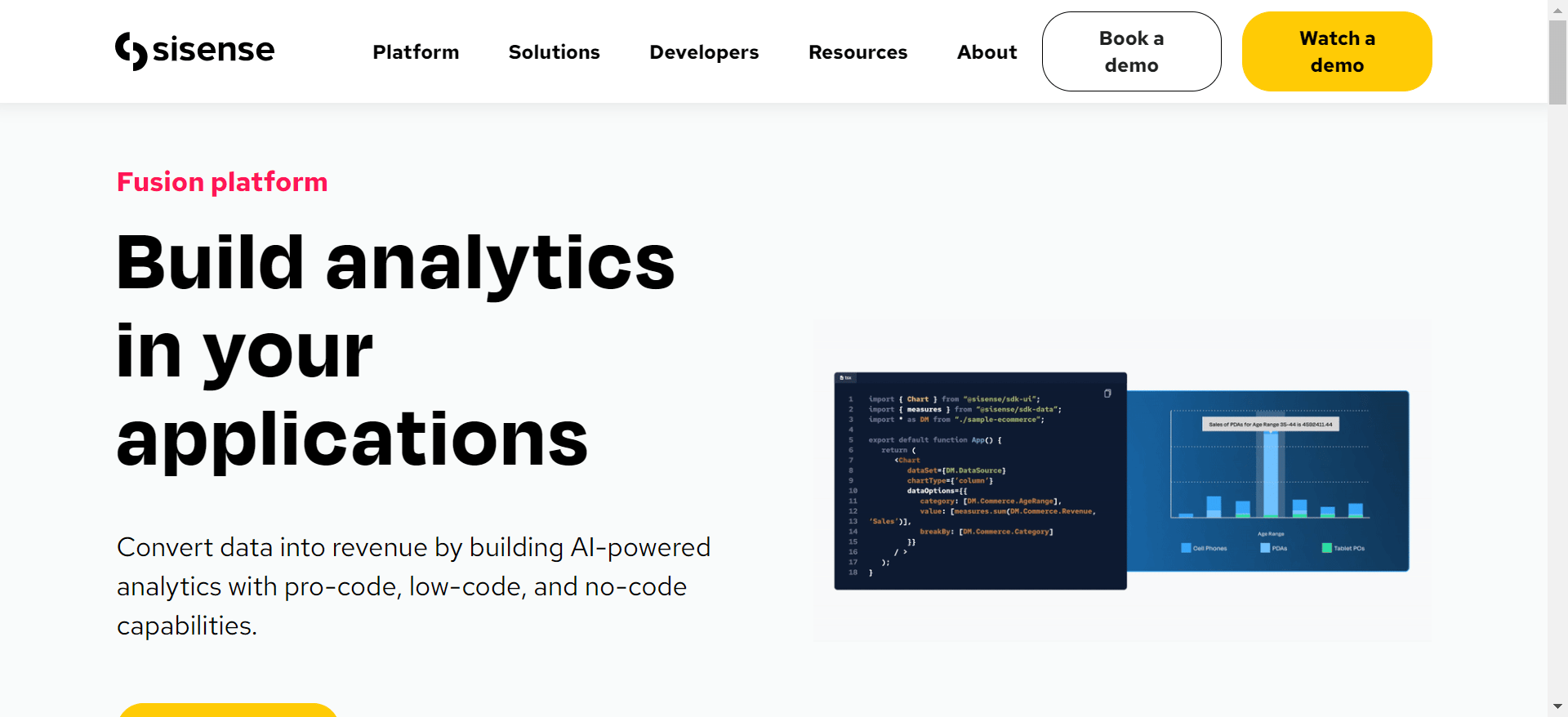
Sisense uses AI to provide features like natural language querying, automated insights, and smart visualizations.
This allows users to ask questions of their data in plain English, uncover hidden patterns, and gain a deeper understanding of their business without needing to write complex code or formulas.
Sisense's NLQ feature, "SimplyAsk," allows users to create reports from scratch using only natural language. This means that users can ask questions of their data in plain English, without needing to know any special syntax or coding.
Key features:
AI exploration
Sisense Fusion
Narrative insights
Predictive insights
Sisense chatbot
Pros and cons:
✅ Cloud based option available
✅ Easy to use
❌ Steep learning curve
Pricing: There's no available pricing on the site.
6. Domo
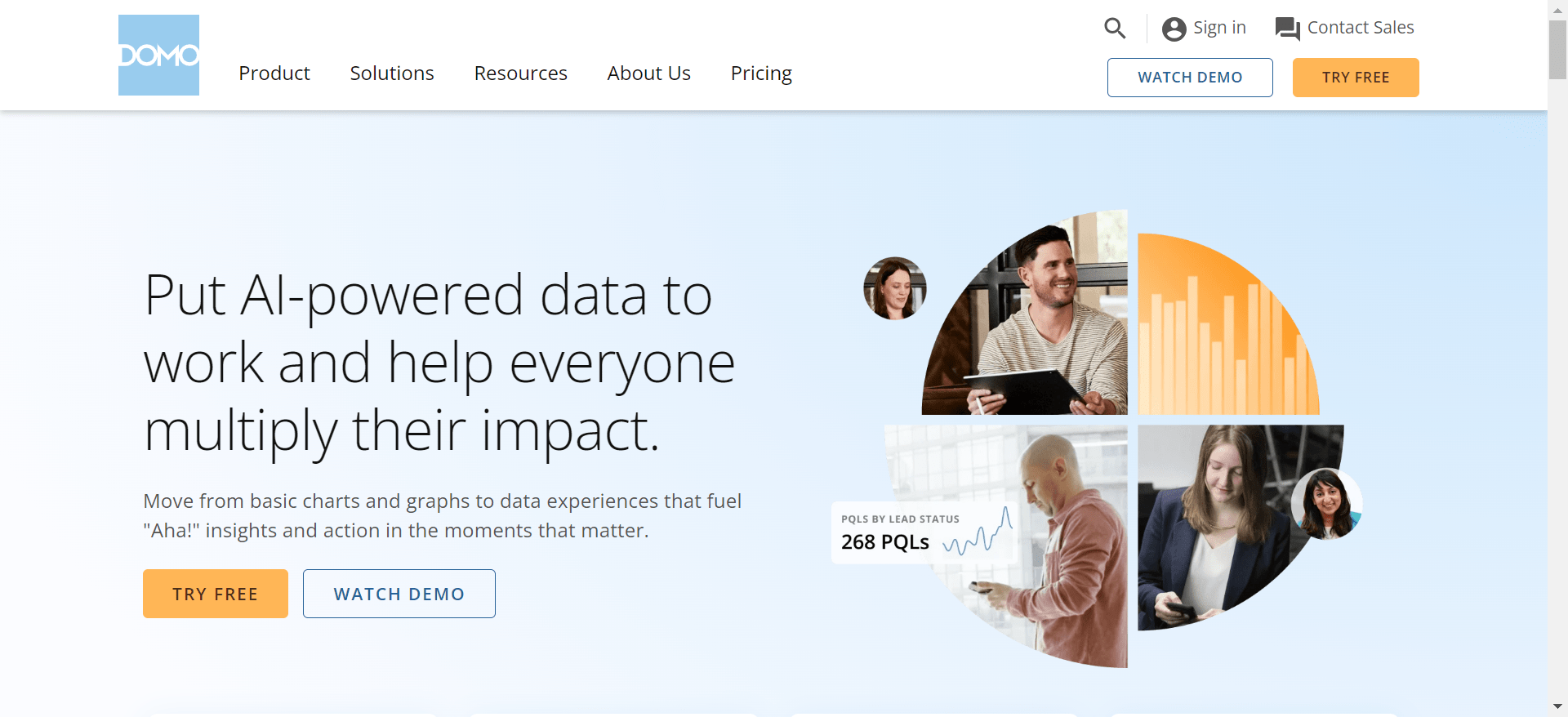
Domo is a tool that specializes in business intelligence and data visualization. Domo's AI can automate repetitive tasks, such as data cleansing and report generation, freeing up your team to focus on more strategic work.
Key features:
AutoML
AI text analysis
AI anomaly detection
Data science workspace
Pros and cons:
✅ Real time data access
✅ Customization option
❌ Limited advanced analytics
Pricing: Domo operates on a consumption-based pricing.
7. Polymer search

Polymer is a robust data analytics tool designed for users across various sectors, including e-commerce and marketing. Polymer's AI can automatically generate dashboards based on your data, saving you time and effort. Key features include AI-generated dashboards that provide instant insights and embedded analytics for seamless integration into existing applications, enhancing productivity.
Key features:
No-code data exploration
Predictive analytics
AI-powered dashboards
Pros and cons
✅ User friendly interface
✅ Real time data syncing
❌ Limited customization options
Pricing: Starter plan at $50/month.
8. Quid
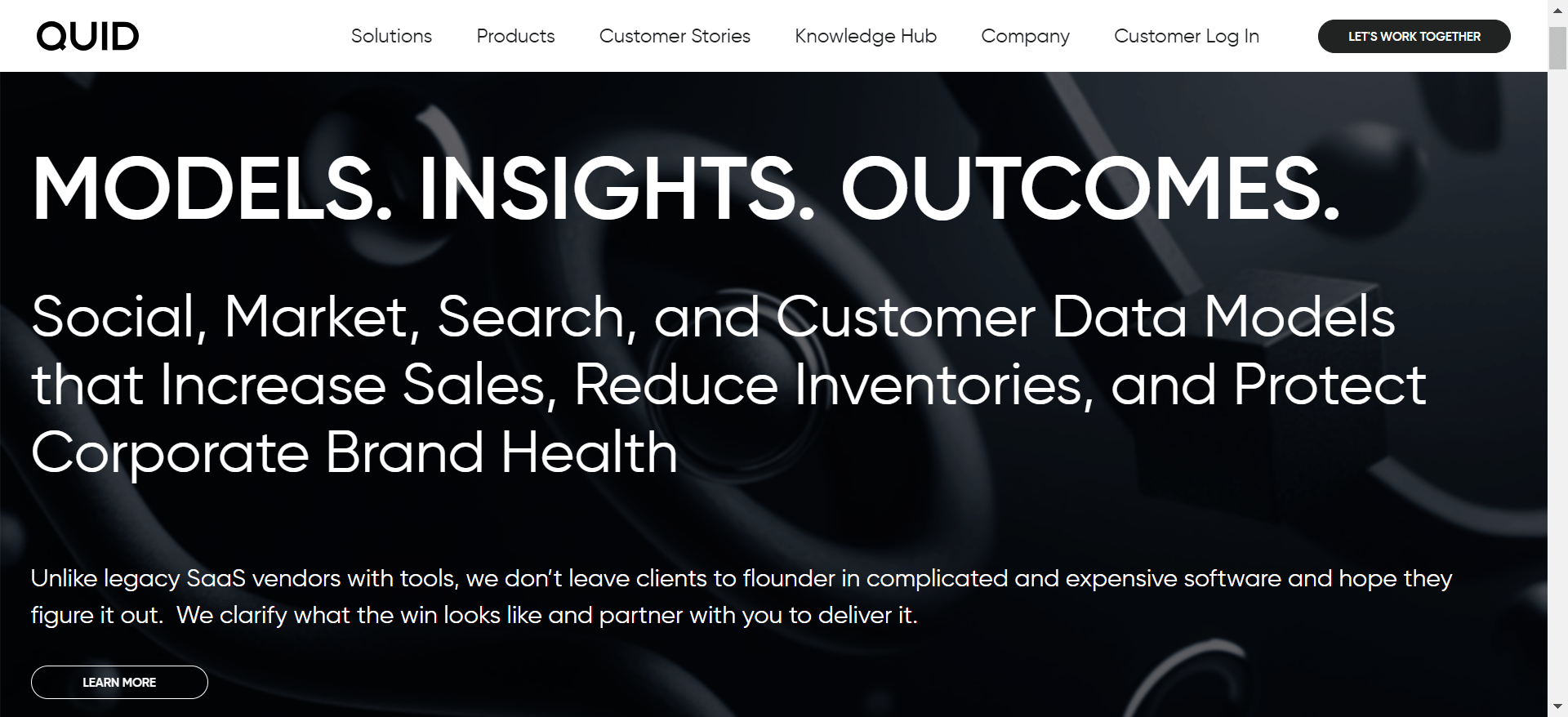
Quid is a powerful data analytics platform that leverages advanced AI and natural language processing to transform vast amounts of unstructured data into actionable insights. It excels in real-time analysis of consumer sentiment, market trends, and competitive landscapes, integrating data from social media, news, and proprietary sources to enhance decision-making.
Quid's AI summarizes key themes and sentiments from vast amounts of text, allowing you to quickly grasp the essence of complex topics.
Key features:
Generative AI Integration
Anomaly detection
Data automation
Pros and cons:
✅ Centralised management
✅ Audience analysis
❌ Lacks advanced features
❌ Very pricey
Pricing: Starter plan at $4995 per month.
9. RapidMiner

RapidMiner is a prominent data science platform designed to facilitate comprehensive data analytics through a user-friendly interface.
RapidMiner includes AutoML capabilities that automatically find the best machine learning models for your data and predict outcomes. This allows users with limited data science experience to build high-quality models without needing to manually code or fine-tune algorithms.
Key features:
Automated machine learning
Automated data preparation
Real-time scoring
Pros and cons:
✅ Collaboration features
✅ Excellent transparency
❌ Steep learning curve
Pricing: Not stated on their page.
10. Julius AI
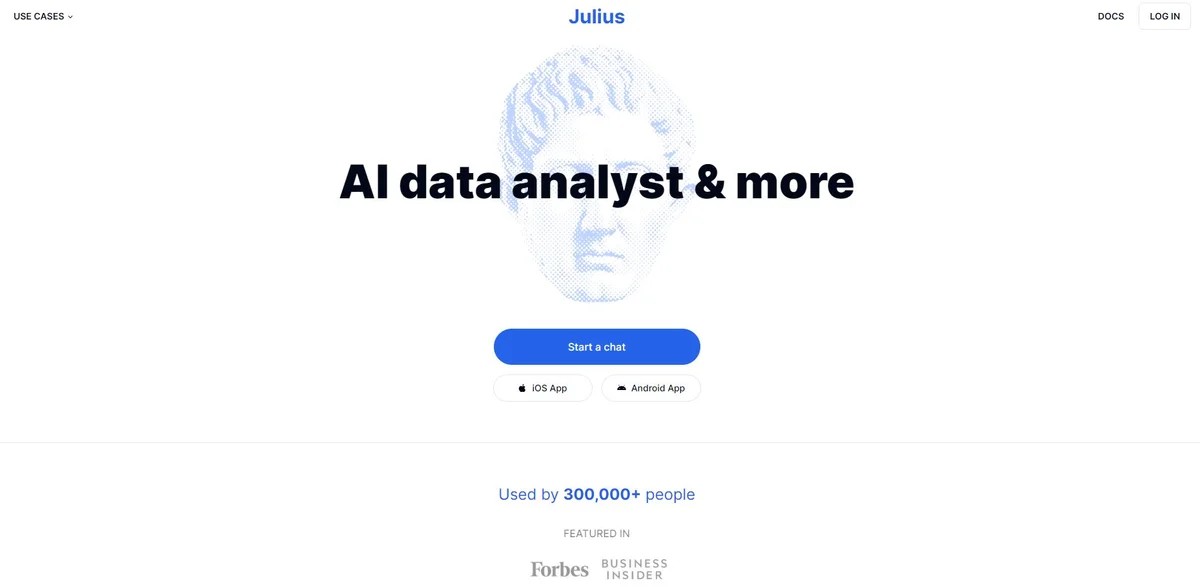
Julius AI is an AI-powered data analyst that aims to make data science accessible to everyone, regardless of their technical skills. It can analyze and visualize data, generate reports, and even build forecasting models, all through a simple chat interface.
Julius AI simplifies the interpretation of large datasets, offering intuitive visualizations and predictive analytics, making it an indispensable tool for both novice and expert data analysts.
Key features:
Predictive forecasting
Automated data analytics
NLP
Pros and cons:
✅ Easy to use
✅ Dashboard design
❌ Can be slow in processing
Pricing: Basic plan starts at $20 per month.
Conclusion
All the platforms on this list can scale your data analytics operations in so many ways.
At Rows, we are here to help you make the most out of data with robust AI features and automation features.
Whether you are a marketing manager, SEO growth advisor, or C.R.O., Rows is perfect for your reports. So what next? Go to Rows.com, import data, automate your report, and see if it's the right match!

